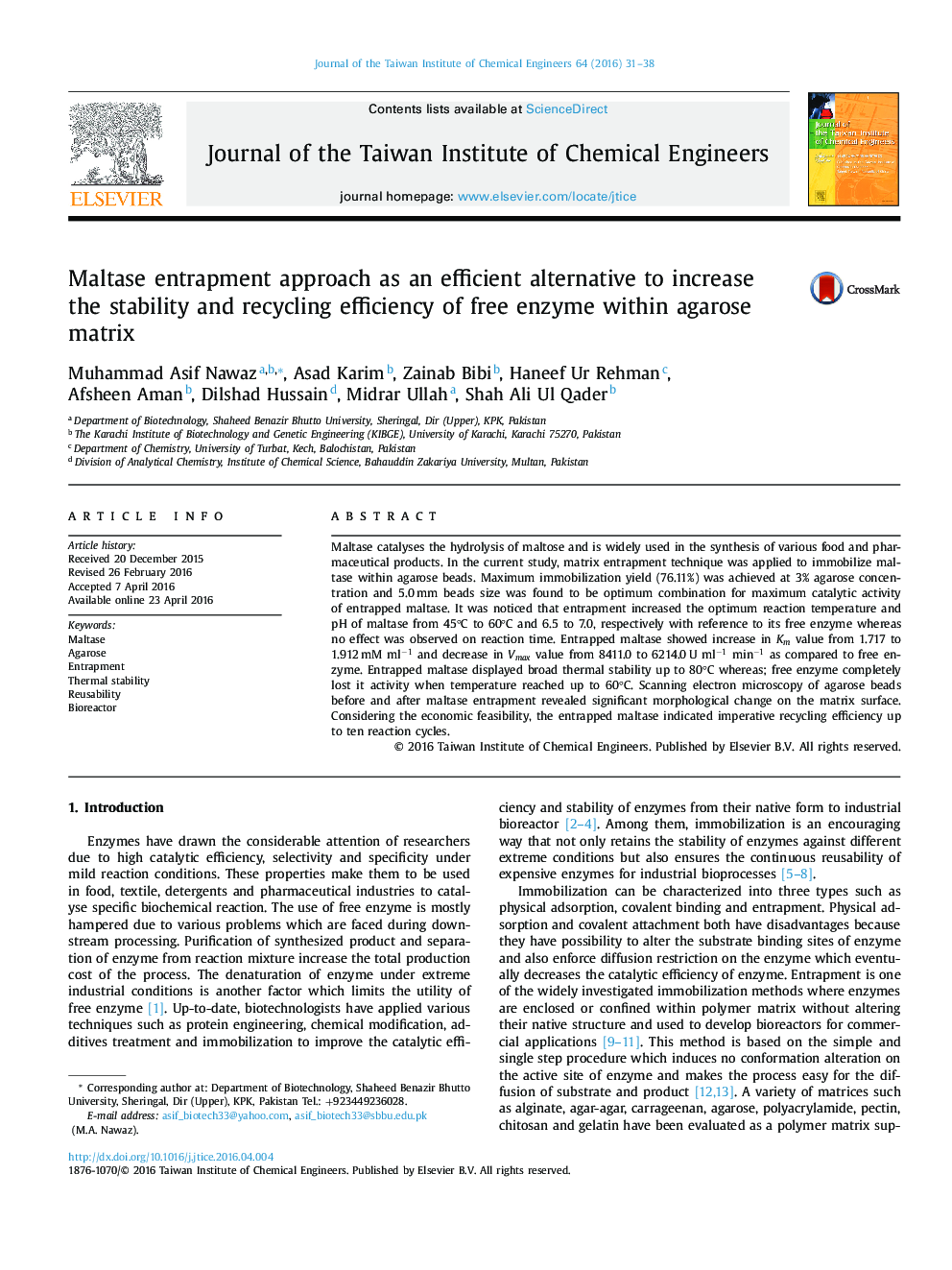| Article ID | Journal | Published Year | Pages | File Type |
|---|---|---|---|---|
| 690263 | Journal of the Taiwan Institute of Chemical Engineers | 2016 | 8 Pages |
•Partially purified maltase was successfully entrapped within porous agarose biopolymer.•Optimum concentration of agarose (3%) showed significant immobilization yield of maltase.•Increase in catalytic efficiency of entrapped maltase was noticed as compared to free form.•Change in reaction temperature and pH of maltase was observed after entrapment.•Immobilization improved the thermal and operational stability of maltase for continuous use.
Maltase catalyses the hydrolysis of maltose and is widely used in the synthesis of various food and pharmaceutical products. In the current study, matrix entrapment technique was applied to immobilize maltase within agarose beads. Maximum immobilization yield (76.11%) was achieved at 3% agarose concentration and 5.0 mm beads size was found to be optimum combination for maximum catalytic activity of entrapped maltase. It was noticed that entrapment increased the optimum reaction temperature and pH of maltase from 45°C to 60°C and 6.5 to 7.0, respectively with reference to its free enzyme whereas no effect was observed on reaction time. Entrapped maltase showed increase in Km value from 1.717 to 1.912 mM ml−1 and decrease in Vmax value from 8411.0 to 6214.0 U ml−1 min−1 as compared to free enzyme. Entrapped maltase displayed broad thermal stability up to 80°C whereas; free enzyme completely lost it activity when temperature reached up to 60°C. Scanning electron microscopy of agarose beads before and after maltase entrapment revealed significant morphological change on the matrix surface. Considering the economic feasibility, the entrapped maltase indicated imperative recycling efficiency up to ten reaction cycles.
Graphical abstractFigure optionsDownload full-size imageDownload as PowerPoint slide
